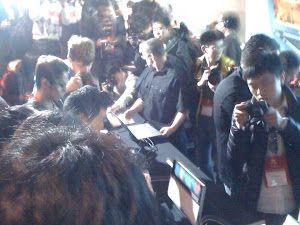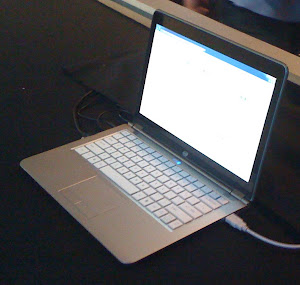With ARM-based tablet sales crowding out netbooks, Intel needed to come up with a way of staying in the ultra-portable, ultra-usable game. Maybe they have something truly innovative in the pipeline, but they weren’t showing it at today’s CES press conference in Las Vegas.
What they did show was a fully productized line of their Ultrabook concept from a wide range of manufacturers, with one or two interesting twists. Ultrabooks are thin, lightweight, Windows 8-based laptops, similar to Macbook Airs, that combine heavy processing power with convertible and hybrid form factors. Some of the models can convert into a thick tablet (an old trick), some are laptops with touch screens and some show glimmers of originality.
Intel debuted a couple of innovative features, which could make for an interesting competition with tablets. One is a small, touch-enabled second screen that functions as a track pad when used in standard laptop mode, and can give users quick access to information and functions when the clamshell is closed. It provides a mobile usage mode for a laptop, and might be attractive to users who need that level of computing power and don’t want to carry around a tablet as well.
Hand-based gesture control is also in the Ultrabook pipeline, allowing users to point and grab in three dimensions. There was an interesting demo that showed a point-of-sale kiosk with customers interacting by waving their hands.
Mooly Eden, Intel corporate vice president and general manager of the PC Client Group said they were trying to drive price points down to “mainstream” levels, which I take to mean down where tablets and netbooks live, in the sub-$1,000 range.
Going forward, Intel-blessed Ultrabooks will incorporate the forthcoming Ivy Bridge processor.


